
Why we teach… Sustainable Materials in the Built Environment
November 24, 2023Home » Why we teach… Sustainable Materials in the Built Environment
Next in our new series looking at themes and topics explored by students on CAT Masters degrees, Tim Coleridge introduces the importance of learning about the sustainability of materials and why our students love the way we teach it.
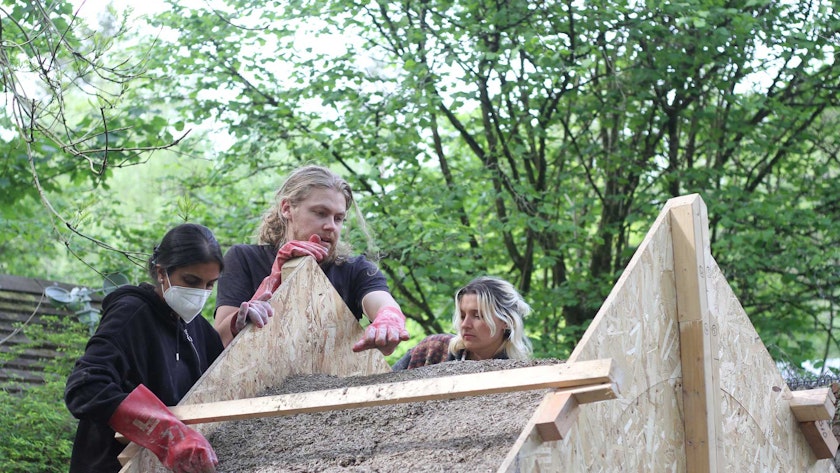
The production of building materials leads to carbon emissions and other significant environmental impacts during their extraction, processing, manufacture, construction and disposal. Conversely, materials can have low embodied energy, low toxicity, be renewable, reusable, recyclable, compostable, and maybe sequester carbon too.
Systematically evaluating these issues forms the focus of the Sustainable Materials in the Built Environment module run by the Graduate School at CAT. It covers materials’ environmental impacts, wider social and health implications, in-use performance and usability.
Why is the topic important?
Building regulations in the UK and Europe have historically focused on reducing operational energy demand – all the electricity, gas or other fuel used to power a building’s daily needs. This has accounted for around two thirds to three quarters of carbon emissions from the UK built environment since 1990.
However, as CAT’s Zero Carbon Britain research has shown, tried and tested technologies exist to make new and refurbished buildings extremely energy efficient, and to generate heat and power onsite, dramatically reducing operational emissions, with ambitious buildings achieving zero or negative net emissions in use.
The construction industry is now therefore waking up to the vital importance of the materials our buildings are made from, which includes carbon emissions and broader environmental impacts embodied in their extraction, processing, manufacture, construction, maintenance and demolition. Carbon emissions embodied across the whole life cycle of materials must be drastically reduced to achieve the UK’s net-zero targets.
To get an initial idea of the scale of the challenge, it’s worth bearing in mind:
- Around 400 million tonnes of materials are consumed every year in the UK for construction – divided equally, that’s about 6 tonnes per person per year!
- Worse still, around 120 million tonnes of waste are generated by the UK construction industry every year.
- Demand for materials is ramping up in the UK and globally to build new buildings and infrastructure projects.
- Approximately 90% of non-fuel minerals extracted in the UK are used for construction – that’s a lot of stone, aggregates and sand, plus clay for brick making and large quantities of limestone and clay mined and burned at high temperature to make cement.
What are the main aspects to consider?
This module is designed to awaken critical skills in environmental decision-making, enhance understanding of the environmental implications of material choices, and give insight into the performance of sustainable materials in adapting to a changing climate.
The module commences by challenging students to consider what is a ‘sustainable material’. Definitions are contested, and the ‘answer’ may be different in different contexts. Should it be about using local materials? Re-use and recycling? High-tech materials and new structural systems? Reviving traditional and vernacular techniques? Learning from nature – biomimicry? Or a combination of them all?
Students from across CAT’s MSc courses choose this module because the sustainability of materials is integrally linked with:
- Land-use change, hydrology and biodiversity of the regions where materials are grown, extracted or disposed of.
- Energy use, carbon emissions and other environmental impacts during their processing, manufacture, transport and use in construction.
- The health and wellbeing of building occupants and construction workers, including safety, indoor air quality, and connection to nature.
- How behaviours impact demand for products, finishes, fixings and furniture, and how these material choices change over time.
- Circular economy strategies that shed a fresh light on opportunities to reduce construction waste.
Students learn how to apply well-informed and sound judgement to the choice and use of materials in practice, exploring economic, socio-cultural, practical and technical aspects. Teaching activities build a thorough appreciation of how environmentally sustainable materials offer creative opportunities for the use and development of high quality, healthy, ecosystem-enhancing, effective and long-lasting products.
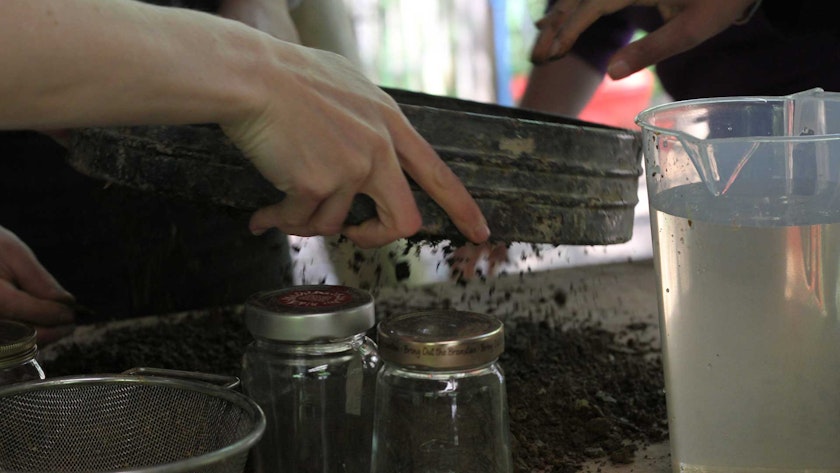
What are the teaching methods?
Teaching activities introduce a range of low-impact and natural materials – including straw, earth, timber, lime and hemp-lime, progressing to consider novel systems and composites, and debate how low-impact materials and products could become mainstream. Theory lectures and demonstrations from experts in the field (such as Rowland Keable, Stafford Holmes and John Butler) complement practical workshops, supporting students to experience the materials first hand – handling and mixing, testing and making, while building understanding of their technical performance and other characteristics.
CAT’s indoor and outdoor teaching spaces offer unique opportunities to enrich students’ learning of these topics, with teaching led by CAT staff, Graduate School of the Environment graduates, and visiting experts. As they learn and socialise together onsite, students experience CAT’s living archive of green buildings from across our 50-year history, including the timber frame Eco-cabins, Walter Segal Self-Build House, Straw Bale Theatre, and the award-winning WISE building.
Quantitative and qualitative understandings are encouraged during the module, with experiential learning bringing to life theoretical information from module texts and professional organisations. After the residential week, learning continues online with discussions and study skills seminars.
Students map the availability and function of raw materials in their home region to gain a deeper applied understanding. In these ways, the module creates interdisciplinary encounters both onsite and online for students from across CAT’s food, ecology, green buildings and behaviour change MSc programmes to playfully explore low-carbon building materials and discuss their wider impacts and implications.
How do students use this learning?
Several students have pursued research in natural materials and low-impact construction for their independent dissertation that completes the MSc.
This includes technical studies of novel bio-composite, plasters and renders, as well as social studies into the challenges and opportunities for the industry to adopt low-carbon materials and construction techniques.
Steve Cole undertook research into the thermal and moisture performance of alternative fibres (such as miscanthus) and binders at Aberystwyth University.
Scott Simpson co-founded IndiNature, which has recently opened the UK’s first hemp fibre insulation factory in the Scottish Borders.
Tom Robinson founded Adaptavate and is working with Jeff Ive and other CAT graduates developing breathable plasters and a hemp-lime based plasterboard for mass production.
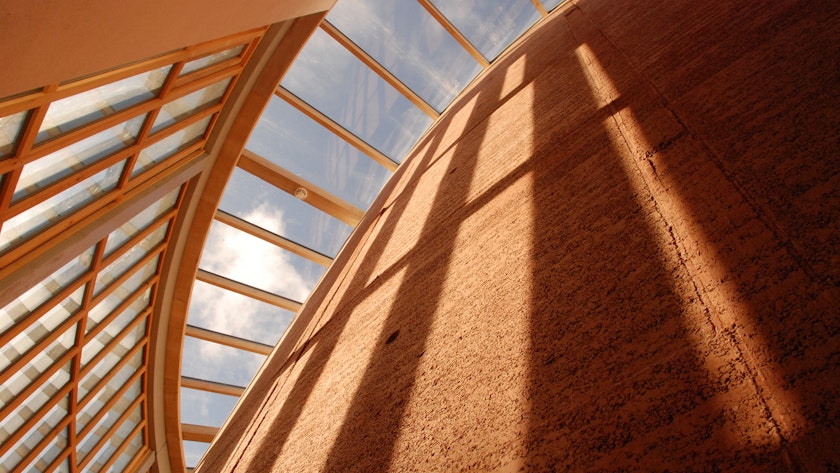
About the author
Tim is an architect and Programme Leader for the Sustainability and Adaptation and Green Building Masters programmes at CAT. He is passionate about sustainable design and adaptation in the built environment, regularly lecturing and leading seminars and practical workshops in low-impact development, bio-based construction materials, low- and zero carbon buildings, and using socio-technical research to close the ‘performance gap’.
Study with us
Find out more about CAT Masters degrees, join an on-site or virtual open day, and explore what funding might be available to you – visit our Graduate School web pages or contact Alis here or on +44 (0)1654 705953.
- Graduate School
- News Feed
Related Topics
Related Pages
Related events

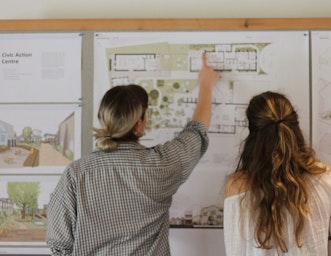
On-site Open Day: MArch Sustainable Architecture course
27th June 2025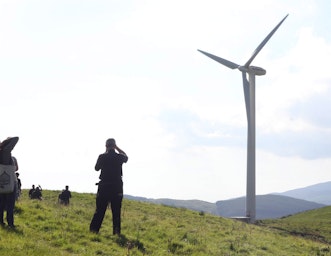
Transformational International Energy Management
30th June 2025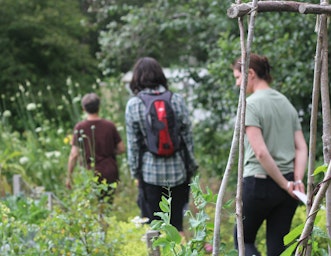
The Science of Sustainable Food Production (Sold out)
30th June 2025GRADUATE SCHOOL OF THE ENVIRONMENT
ACT NOW FOR A SUSTAINABLE FUTURE
Learn more about our exciting postgraduate courses and sign up for our emails to stay up-to-date on all the latest.
